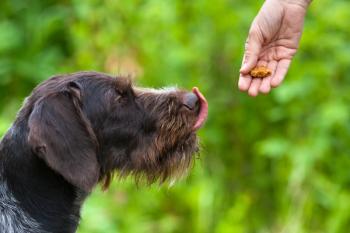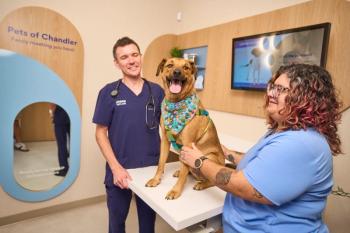
5 Ways to pick up on your pet's vision changes

Share this advice from Alex Sigmund, DVM, DACVO, with pet parents to help catch vision issues early and ensure timely care
Alex Sigmund, DVM, DACVO, shares practical tips for pet parents to monitor their pets’ vision at home. By sharing these tips with clients, you can help them identify subtle signs of vision impairment that may indicate underlying issues. Educating clients on what to look for not only fosters proactive pet care, but also ensures that any potential problems are addressed promptly through timely veterinary intervention.
1. Notice when your pet is bumping into things
If your pet is consistently bumping into objects they previously navigated with ease, it might be a sign of declining vision. Many pets are familiar with their surroundings, so these changes might only become apparent in new environments or when furniture is rearranged.
2. Watch for difficulties in dim lighting
Vision changes often become more apparent in low-light conditions. Whether it’s during early morning walks, dusk outings, or simply in the dimmer areas of your home, pets may struggle with transitions from bright to low-light spaces. Difficulty navigating stairs, jumping on furniture, or moving between rooms could indicate retinal degeneration, which may be genetic or age-related.
3. Observe increased reliance on smell
A noticeable shift toward using their nose more frequently can be a clue. For example, if your pet can’t track a thrown treat or toy visually and instead sniffs intently to locate it, this heightened reliance on smell may suggest declining vision.
4. Look for one-sided vision changes
Sometimes vision loss may only affect one side. This can cause your pet to become startled or even snap when approached from the impaired side. Being aware of this behavior can help you identify potential issues before they worsen.
5. Check the size of your pet’s pupils
A change in pupil size may be subtle yet significant. Normally, pupils adjust with light: larger in dim settings and smaller in bright settings. If you notice your pet’s pupils remain unusually large in bright light, this could be a warning sign of retinal disease, which might be linked to conditions like retinal degeneration, detachment from high blood pressure, or even glaucoma.
Newsletter
From exam room tips to practice management insights, get trusted veterinary news delivered straight to your inbox—subscribe to dvm360.






